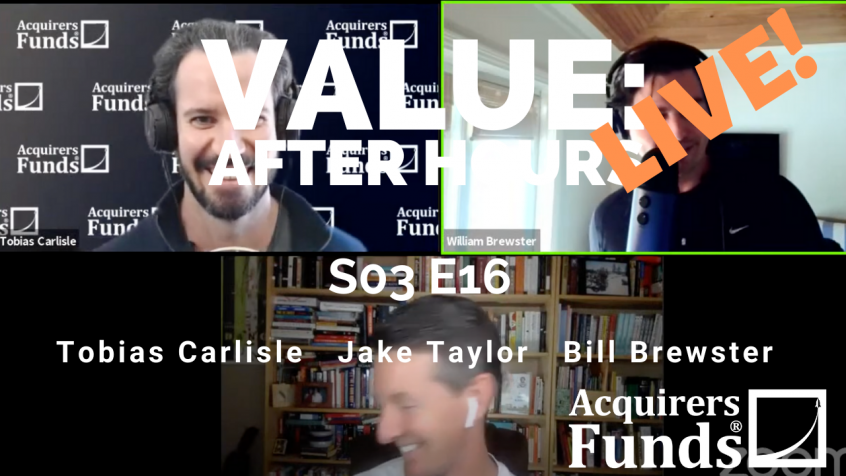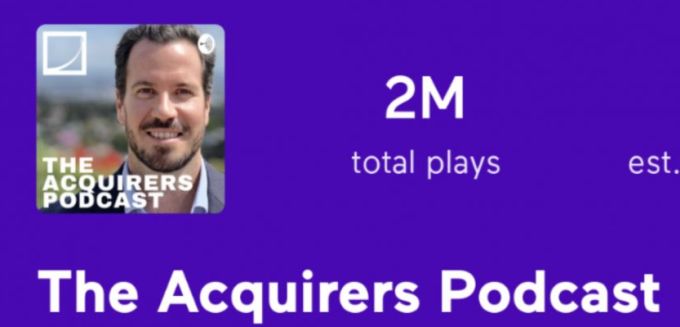In their recent episode of the VALUE: After Hours Podcast, Taylor, Brewster, and Carlisle discussed Investing Lessons From The Dutch Famine Of 1944-45. Here’s an excerpt from the episode:
Jake: Yeah. [laughs] All right. Let’s transport ourselves back to towards the end of World War II. Food supplies are really scarce in the Netherlands. Currently, most of it is being occupied by Germany, and the Dutch government that existed at that time organized a railway strike that pissed the Germans off, because they couldn’t move their stuff around inside of Germany, because they were occupying it– or inside of the Netherlands, because they were occupying it. The Germans put up a food embargo. It was really hard also for the Allied to get supplies and food to the to the Dutch, because all the ports were all bombed out, and the place was just in shambles. So, food stocks rapidly declined for about four and a half million people who were living there. Adult rations in Amsterdam dropped to below thousand calories per day in November of 1944 and then, below 580 calories per day in February 1945. Have you guys done much playing around with fasting at all ever?
Tobias: Yeah, but that’s very, very little.
Jake: Not probably for months on end at all?
Tobias: Oh, no.
Jake: Well below basal metabolic rate?
Tobias: No. Nothing like that.
Bill: I think if you look at my body, no, I don’t fast.
[laughter]Jake: That was a rhetorical question. It’s obviously pretty rough, and people– also happening at that same time, like gas and electricity, and the heat were all shut off with this in the middle of the war. Young people who are relatively healthy would walk 10 to 20 kilometers out into the farm to trade their valuables for food and bring it back and try to feed the family. People resorted to actually eating like tulip bulbs and beets, and anything that they could gnaw on and they started burning all their furniture to stay warm. It’s pretty bleak. About 18,000 roughly people died directly from the famine, and probably many more from health-related things.
All of this is very bleak and grave, but it did produce some interesting data, if you will, in a scientific experiment, because you took a developed, relatively advanced nation, and you basically cut the food off for a period of time. It gave us all kinds of really interesting control group basically that we’d never really had before. Children of women who were exposed to the famine, and especially if you were in the third trimester during that winter, created these incredible long-run problems. The kids who were born during that time are much more susceptible to diabetes, cardiovascular disease, schizophrenia, and they looked at it and actually, it looks like possibly this PYM3 gene was downregulated during that time period. What ended up happening was then is it, it slowed their metabolism down. Their bodies will store every calorie that it can get its hands on, because of the lean conditions of this very, very important time period, when sort of the printing was happening within the body. It lasted not only through their lives– and obviously those kids were smaller than average, the ones who came out of that cohort, but what’s interesting is that their kids were also smaller than average. Environment can silence or boost DNA. The study of that long-run control of DNA is called epigenetics. What you end up was that surprisingly the children, it echoed for a couple generations after this time period where they had this shortage.
Another interesting thing was they discovered that actually there was a connection between wheat and celiac disease, so you had all these kids in a ward for a hospital that had celiac. When the wheat got cut off due to the famine, all these kids miraculously recovered, and then when the foods came back, like wheat came back, they all immediately relapsed. That’s how we figured out the connection between wheat and celiac disease.
Tobias: How did celiac disease manifest? What was the–
Jake: I think it looks a lot like-
Tobias: IBS, something like that?
Jake: -IBS, yeah. Interestingly enough, Audrey Hepburn was actually a child during that time period in Netherlands, and even though she was obviously very wealthy, she had really poor health through the later part of her life where she had anemia and respiratory illnesses and was just generally unhealthy and couldn’t really fix it. That’s some interesting background there of like, “Wow, we have this control group.”
You can find out more about the VALUE: After Hours Podcast here – VALUE: After Hours Podcast. You can also listen to the podcast on your favorite podcast platforms here:
For all the latest news and podcasts, join our free newsletter here.
Don’t forget to check out our FREE Large Cap 1000 – Stock Screener, here at The Acquirer’s Multiple:





